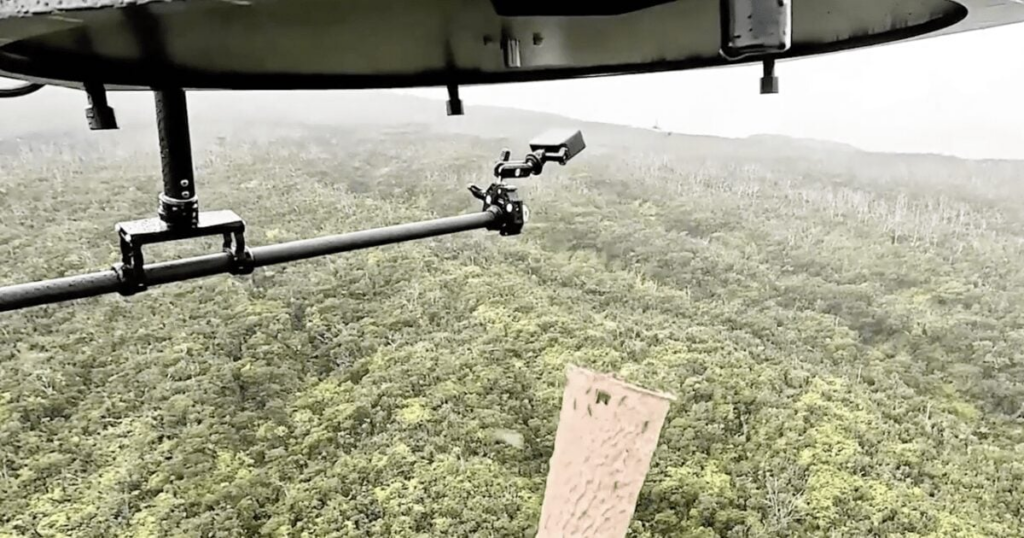🔴 Website 👉 https://u-s-news.com/
Telegram 👉 https://t.me/usnewscom_channel
I’m sure locals in Hawaii are not a fan of this!
Scientists and conservationists in Hawaii have dropped thousands of biodegradable pods containing mosquitoes in an attempt to combat “climate change.”
Scientists have launched a new project to drop genetically modified mosquitoes in the Hawaii forests to control the mosquitoe population in an effort to prevent the Hawaiian honeycreeper bird from going extinct.
According to a scientist involved in the project, climate change has caused mosquitoes to move towards the mountains in Hawaii, resulting in some bird populations facing extinction.
CNN provided more details on how the mosquitoes were modified:
In June, dozens of biodegradable pods fell from the sky over the forests of Hawaii. Each one, delivered by drone, contained about 1,000 mosquitoes.
These weren’t just any mosquitoes — they were non-biting, lab-reared male mosquitoes carrying a common bacterium that results in eggs that don’t hatch when the males mate with wild females. The hope is that they will help to control the archipelago’s invasive mosquito population, which is decimating native bird populations, such as rare Hawaiian honeycreepers.
The birds, which are key pollinators and seed dispersers and also play a central role in Hawaiian culture, are in dire straits. There were once more than 50 known species of honeycreepers in Hawaii, but today there are only 17 left, most of which are endangered.
Last year, the ‘akikiki, a small gray bird, went functionally extinct in the wild, and less than 100 of the yellow-green ʻakekeʻe are estimated to remain.
Development and deforestation have had an impact, but according to Dr. Chris Farmer, Hawaii program director for the American Bird Conservancy (ABC), the “existential threat” is avian malaria, which is spread by mosquitoes.
The insects are not native to Hawaii, but were first reported in 1826, likely unintentionally carried over by whaling vessels. “They caused waves of extinction,” says Farmer, as many native birds, such as the honeycreepers, had no resistance to the disease.
Since mosquitoes thrive in the warmer tropical habitats in the low elevations of Hawaii’s islands, the remaining honeycreepers found a refuge higher up in the mountains of islands such as Maui and Kauai, he explains.
Now, this is changing. “With climate change, we are seeing warmer temperatures and we’re watching the mosquitoes move up the mountains,” he says. “(In places like Kauai) we’re watching the populations of birds there just completely plummet.”
Scientists are using drones to unleash thousands of mosquitoes. The hope is that the efforts will help colorful songbirds known as honeycreepers that were once abundant in Hawaii rebound.
Do you think the solution will be a success? Debate your thoughts below. See the birds that… pic.twitter.com/4cSdKCmwMq
— Smithsonian Magazine (@SmithsonianMag) June 18, 2025
According to the Hawaii Star, there are no native mosquitoes in Hawaii:
Hawaii is known around the world for its beautiful beaches, lush rainforests, and vibrant culture. But one thing it doesn’t have? Mosquitoes. If you’re short on time, here’s a quick answer: Hawaii has no native mosquitoes thanks to geographic isolation, lack of standing water, steady trade winds, and proactive efforts from the state government over the past century.
The Hawaiian Islands are one of the most isolated archipelagos in the world, located in the middle of the Pacific Ocean nearly 2,400 miles from the nearest continent. This extreme remoteness dates back to Hawaii’s volcanic origins over 70 million years ago as the Pacific tectonic plate moved over a hot spot in the Earth’s mantle, leading to continued volcanic eruptions building up the islands from the sea floor.
This distance from other land masses had major implications for plant and animal migration – very few species were able to traverse vast ocean stretches to reach Hawaii’s shores. As a result, Hawaii has a very high rate of endemic species, found nowhere else on Earth.
However, some winged insects like mosquitoes were thankfully unable to make the journey.Hawaii’s isolated location prevented the natural spread of mosquitoes from other regions. Mosquitoes have limited flying ranges up to only 3 miles from their breeding sites. With over 2,000 miles of open ocean from the nearest continent, Hawaii lay well out of reach for mosquito migration by air.
This is a Guest Post from our friends over at WLTReport.
